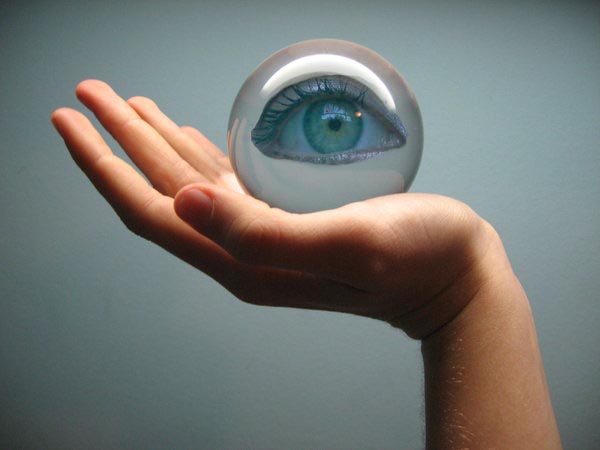Archive for July, 2014
How to Make Big Data Far More Powerful
 Big Data is powerful – measure what people do on the web, summarize the patterns, and use the information for good. These data sets are so powerful because they’re bigger than big; there’s little bias since the data collection is automatic; and the analysis is automated. There’s huge potential in the knowledge of what people click, what pages they land on, and what place the jump from.
Big Data is powerful – measure what people do on the web, summarize the patterns, and use the information for good. These data sets are so powerful because they’re bigger than big; there’s little bias since the data collection is automatic; and the analysis is automated. There’s huge potential in the knowledge of what people click, what pages they land on, and what place the jump from.
It’s magical to think about what can be accomplished with the landing pages and click-through rates for any demographic you choose. Here are some examples:
- This is the type of content our demographic of value (DOV) lands on, and if we create more content like this we’ll get more from them to land where we want.
- These are the pages our DOV jump from, and if we advertise there more of our DOV will see our products.
- This is the geographic location of our DOV when they land on our website, and if we build out our sales capacity in these locations we’ll sell more.
- This is the time slot when our DOV is most active on their smart phones, and if we tweet more during that time we’ll reach more of them.
But just as there’s immense power knowing the actions of your DOV (what they click on), there are huge assumptions on what it all means. Here are two big ones:
- All clicks are created equal.
- When more see our content, more will do what we want.
Here is an example of three members (A, B, C) of your demographic of interest who take the same measurable action but with different meaning behind it:
Member A, after four drinks, speeds home recklessly; loses control of the car; crashes into your house; and parks the car in your living room.
Member B, after grocery shopping, drives home at the speed limit; the front wheel falls off due to a mechanical problem; loses control of the car; crashes into your house; and parks the car in your living room.
Member C, after volunteering at a well-respected non-profit agency, drives home in a torrential rain 15 miles per hour below the speed limit; a child on a bicycle bolts into the lane without warning and C swerves to miss the child; loses control of the car; crashes into your house; and parks the car in your living room.
All three did the same thing – crashed into your house – but the intent, the why, is different. Same click, but not equal. And when you put your content in front of them, regardless of what you want them to do, A, B, and C will respond differently. Same DOV, but different intentions behind their actions.
Big Data, with its focus on the whats, is powerful, but can be made stereoscopic with the addition of a second lens that can see the whys. Problem is, the whys aren’t captured in a clean, binary way – not transactional but conversational – and are subject to interpretation biases where the integers of the whats are not.
With people, action is preceded by intent, and intent is set by thoughts, feelings, history, and context. And the best way to understand all that is through their stories. If you collect and analyze customer stories you’ll better understand their predispositions and can better hypothesize and test how they’ll respond.
In the Big Data sense, Nirvana for stories is a huge sample size collected quickly with little effort, analysis without biases, and direct access to the stories themselves.
New data streams are needed to collect the whys in a low overhead way, and new methods are needed to analyze them quickly and without biases. And a new perspective is needed to see not only the amazing power of Big Data (the whats), but the immense potential of seeing the what’s with one eye and the whys with the other.
Keep counting the whats with traditional Big Data work – there’s real value there. But also keep one eye on the horizon for new ways to collect and analyze the whys (customer stories) in a Big Data way.
Collection and analysis of customer stories, if the sample size is big enough and biases small enough, is the best way I know to look through the fog and understand emerging customer needs and emerging markets.
If you can figure out how to do it, it will definitely be worth the effort.
Difficult Discussions Are The Most Important Discussions
 When the train is getting ready to pull out of the station, and you know in your heart the destination isn’t right, what do you do? If you still had time to talk to the conductor, would you? What would you say? If your railroad is so proud of getting to the destination on time it cannot not muster the courage to second guess the well-worn time table, is all hope lost?
When the train is getting ready to pull out of the station, and you know in your heart the destination isn’t right, what do you do? If you still had time to talk to the conductor, would you? What would you say? If your railroad is so proud of getting to the destination on time it cannot not muster the courage to second guess the well-worn time table, is all hope lost?
The trouble with thinking the destination isn’t right is that it’s an opinion. Your opinion may be backed by years of experience, good intuition, and a kind heart, but it’s still an opinion. And the rule with opinions – if there’s one, there are others. And as such, there’s never consensus on the next destination.
But even as the coal is being shoveled into the firebox and the boiler pressure is almost there, there’s still time to take action. If the train hasn’t left the station, there’s still time. Don’t let the building momentum stop you from doing what must be done. Yes, there’s the sunk cost of lining everything up and getting ready to go, but, no, that doesn’t justify a journey down the wrong track. Find the conductor and bend her ear. Be clear, be truthful, and be passionate. Tell her you’re not sure it’s the wrong destination, but you’re sure enough to pull the pressure relieve valve and take some time to think more about what’s about to happen.
No one wants to step in front of a moving train. It’s no fun for anyone, and dangerous for the brave soul standing in the tracks. And it’s a failure of sorts if it comes to that. The best way to prevent a train from heading down the wrong track is candid discussions about the facts and clarity around why the journey should happen. But we need to do a better job at having those tough discussions earlier in the process.
Unfortunately in business today, the foul underbelly of alignment blocks the difficult decisions that should happen. We’ve mapped disagreement to foul play and amoral behavior, and our organizations make it clear that supporting the right answer, right from the get-go, is the right answer. The result is premature alignment and unwarranted alignment without thoughtful, effective debate on the merits. For some reason, it’s no longer okay to disagree.
Difficult discussions are difficult. And prolonging them only makes them more difficult. In fact, that’s sometimes a tactic – push off the tough conversations until the momentum rolls over all intensions to have them.
Hold onto the fact that your company wants the tough conversations to have them. In the short term, things are more stressful, but in the long term thing are more profitable. Remember, though sometimes bureaucracy makes it difficult, you are paid to add your thinking into the mix. And keep in mind you have a valuable perspective that deserves to be valued.
When the train is leaving the station, it’s the easiest time to recognize the tough discussions need to happen but it’s the most difficult time to have them. Earlier in the project it’s easier to have them and far more difficult to recognize they should happen.
Going forward, modify your existing processes to cut through inappropriate momentum building. And better still, use your knowledge of how your organization works to create mechanisms to trigger difficult conversations and prevent premature alignment.
Innovation’s Mantra – Sell New Products To New Customers
 There are three types of innovation: innovation that creates jobs, innovation that’s job neutral, and innovation that reduces jobs.
There are three types of innovation: innovation that creates jobs, innovation that’s job neutral, and innovation that reduces jobs.
Innovation that reduces jobs is by far the most common. This innovation improves the efficiency of things that already exist – the mantra: do the same, but with less. No increase in sales, just fewer people employed.
Innovation that’s job neutral is less common. This innovation improves what you sell today so the customer will buy the new one instead of the old one. It’s a trade – instead of buying the old one they buy the new one. No increase in sales, same number of people employed.
Innovation that creates jobs is uncommon. This innovation radically changes what you sell today and moves it from expensive and complicated to affordable and accessible. Sell more, employ more.
Clay Christensen calls it Disruptive Innovation; Vijay Govindarajan calls it Reverse Innovation; and I call it Less-With-Far-Less.
The idea is the product that is sold to a relatively small customer base (due to its cost) is transformed into something new with far broader applicability (due to its hyper-low cost). Clay says to “look down” to see the new technologies that do less but have a super low cost structure which reduces the barrier to entry. And because more people can afford it, more people buy it. And these aren’t the folks that buy your existing products. They’re new customers.
Vijay says growth over the next decades will come from the developing world who today cannot afford the developed world’s product. But, when the price comes down (down by a factor of 10 then down by a factor of 100), you sell many more. And these folks, too, are new customers.
I say the design and marketing communities must get over their unnatural fascination with “more” thinking. To sell to new customers the best strategy is increase the number of people who can afford your product. And the best way to do that is to radically reduce the cost signature at the expense of features and function. If you can give ground a bit on the thing that makes your product successful, there is huge opportunity to reduce cost – think 80% less cost and 20% less function. Again, you sell new product to new customers.
Here’s a thought experiment to help put you in the right mental context: Create a plan to form a new business unit that cannot sell to your existing customers, must sell a product that does less (20%) and costs far less (80%), and must sell it in the developing world. Now, create a list of small projects to test new technologies with radically lower cost structures, likely from other industries. The constraint on the projects – you must be able to squeeze them into your existing workload and get them done with your existing budget and people. It doesn’t matter how long the projects take, but the investment must be below the radar.
The funny thing is, if you actually run a couple small projects (or even just one) to identify those new technologies, for short money you’ve started your journey to selling new products to new customers.
Marketing’s Holy Grail – Emerging Customer Needs
 The Holy Grail of marketing is to identify emerging customer needs before anyone else and satisfy them to create new markets. It has been a long and fruitless slog as emerging needs have proven themselves elusive. And once candidates are identified, it’s a challenge to agree which are the game-changers and which are the ghosts. There are too many opinions and too few facts. But there’s treasure at the end of the rainbow and the quest continues.
The Holy Grail of marketing is to identify emerging customer needs before anyone else and satisfy them to create new markets. It has been a long and fruitless slog as emerging needs have proven themselves elusive. And once candidates are identified, it’s a challenge to agree which are the game-changers and which are the ghosts. There are too many opinions and too few facts. But there’s treasure at the end of the rainbow and the quest continues.
Emerging things are just coming to be, just starting, so they appy to just a small subset of customers; and emerging things are new and different, so they’re unfamiliar. Unfamiliar plus small same size equals elusive.
I don’t believe in emerging customer needs, I believe in emergent customer behavior.
Emergent behavior is based on actions taken (past tense) and is objectively verifiable. Yes or no, did the customer use the product in a new way? Yes or no, did the customer make the product do something it wasn’t supposed to? Did they use it in a new industry? Did they modify the product on their own? Did they combine it with something altogether unrelated? No argument.
When you ask a customer how to improve your product, their answers aren’t all that important to them. But when a customer takes initiative and action, when they do something new and different with your product, it’s important to them. And even when just a few rouge customers take similar action, it’s worth understanding why they did it – there’s a good chance there’s treasure at the end of that rainbow.
With traditional VOC methods, it has been cost prohibitive to visit enough customers to learn about a handful at the fringes doing the same crazy new thing with your product. Also, with traditional VOCs, these “outliers” are thrown out because they’re, well, they’re outliers. But emergent behavior comes from these very outliers. New information streams and new ways to visualize them are needed to meet these challenges.
For these new information streams, think VOC without the travel; VOC without leading the witness; VOC where the cost of capturing their stories is so low there are so many stories captured that it’s possible to collect a handful of outliers doing what could be the seed for the next new market.
To reduce the cost of acquisition, stories are entered using an app on a smart phone; to let emergent themes emerge, customers code their own stories with a common, non-biasing set of attributes; and to see patterns and outliers, the coded stories are displayed visually.
In the past, the mechanisms to collect and process these information streams did not exist. But they do now.
I hope you haven’t given up on the possibility of understanding what your customers will want in the near future, because it’s now possible.
I urge you to check out SenseMaker.
What Do You Believe About Independence?
 Independence is important; independence is powerful; it’s dangerous; it’s threatening. But, above all, independence is about control.
Independence is important; independence is powerful; it’s dangerous; it’s threatening. But, above all, independence is about control.
If you believe it’s a zero-sum-game, independence is adverserial – more for you, less for me. It’s give-and-take without the give – I don’t give you control, and you take it anyway.
If you believe there’s no trust, independence is scary. If you take initiative and demonstrate independence, you’re afraid I’ll repond negatively because you took control.
If you believe there’s no mutual respect, independence is spiteful. You give less control than you could and manipulate to take even less; I take more than the situation calls and politic to secure even more.
If you believe there’s a surplus, independence is empowering – more for you, more for me, more for everyone.
If you believe there’s trust, independence is exilerating. When you take initiative I tell the world you deserve all that control, and more.
If you believe there’s mutual respect, independence is nurturing. I push you to take more control, and you challenge yourself to do just that.
What do you believe?
 Mike Shipulski
Mike Shipulski